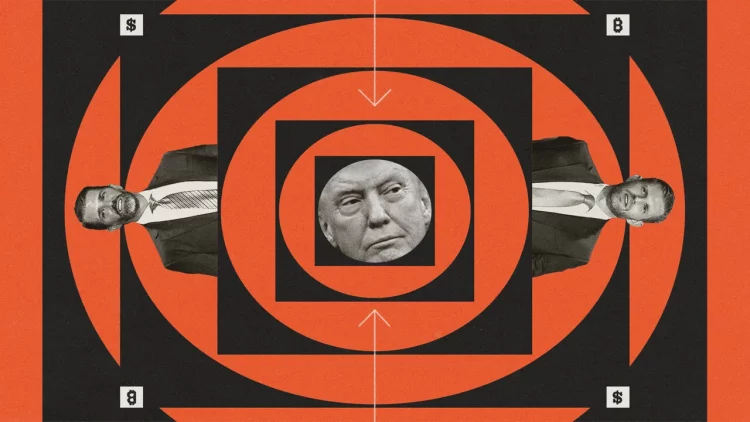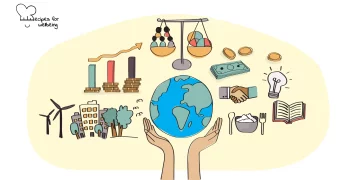Resilience, Consolidation, and Hidden Risks in America’s Financial System
Introduction
The United States banking sector has long been considered the backbone of the global financial system. Home to the world’s largest financial institutions, the most sophisticated capital markets, and the most advanced regulatory frameworks, American banks have historically been symbols of stability and economic leadership. Yet the events of 2023—marked by the sudden collapse of Silicon Valley Bank (SVB), Signature Bank, and First Republic—exposed structural weaknesses that many believed had been resolved after the 2008 financial crisis.
The regional banking turmoil did not escalate into a systemic meltdown, thanks largely to rapid Federal Reserve intervention and the inherent resilience of Tier-1 institutions. However, the crisis revealed deeper vulnerabilities tied to interest-rate shocks, digital-era bank runs, asset-liability mismatches, and the increasingly fragile structure of mid-sized banks. These issues are reshaping the American financial landscape in profound ways, accelerating consolidation, altering regulatory priorities, and redefining the relationship between banks, depositors, and the broader economy.
This article explores how the U.S. banking system is evolving after the regional bank crisis. It examines the forces driving change, the role of the Federal Reserve, the future of small and mid-size banks, the increasing dominance of megabanks, the risks lurking beneath the surface, and what the next decade of American banking may look like.
1. The Roots of the Regional Banking Crisis
To understand the shifting structure of the U.S. banking sector, one must first revisit the origins of the 2023 crisis. While some commentators framed the collapses as isolated events, the underlying causes were systemic and reflective of broader vulnerabilities.
1.1 The interest-rate shock
Between 2022 and 2023, the Federal Reserve implemented the fastest pace of rate hikes in four decades. While necessary to curb inflation, the abrupt transition from near-zero rates to over 5% created significant strain on bank balance sheets.
Banks that had accumulated long-duration assets during the low-rate environment saw the market value of these assets fall dramatically as yields rose.
The result was:
- unrealized losses on Treasury and mortgage-backed securities
- reduced capital buffers
- weakened liquidity profiles
Silicon Valley Bank alone held tens of billions in unrealized losses—an issue shared across much of the regional banking sector.
1.2 Asset-liability mismatches
Many regional banks relied heavily on:
- short-term, highly concentrated deposits
- long-term fixed-rate investments
When depositors began withdrawing funds in response to deteriorating liquidity, banks were forced to sell long-term assets at steep losses. This mismatch was not unique to SVB—it was an industry-wide structural flaw.
1.3 The digital bank run
Perhaps the most shocking aspect was the speed of the collapse. Social media-driven panic, combined with mobile banking apps that allow instant digital transfers, created the fastest bank run in U.S. history.
Billions of dollars exited SVB in hours, not days.
This revealed a new systemic risk:
In the digital era, confidence can evaporate faster than regulators can respond.
1.4 Concentrated depositor bases
Regional banks often serve specific industries or geographic clusters. SVB, for example, was deeply entwined with the tech and venture-capital ecosystem.
When confidence in one part of the system falls, the entire depositor base can act in unison, amplifying volatility.
2. How the Crisis Reshaped U.S. Banking Structures
The 2023 events were not merely a temporary shock—they catalyzed structural changes that continue to unfold.
2.1 Consolidation accelerated rapidly
Since the crisis:
- Large banks have grown larger
- Weak mid-size banks have been absorbed
- Community banks face existential pressure
First Republic, once valued at over $20 billion, was absorbed by JPMorgan. This was part of a broader trend: megabanks increasingly dominate deposits, lending, and payments.
2.2 Depositor behavior changed permanently
Depositors—especially corporate clients—became more sensitive to:
- uninsured deposit exposure
- bank capitalization
- liquidity guarantees
More than $800 billion moved into money-market funds and megabanks in the months following the collapse. This shift has not fully reversed, weakening the funding base of smaller institutions.
2.3 Regulatory tightening is inevitable
Regulators have proposed or implemented:
- higher capital requirements for mid-size banks
- stricter liquidity stress testing
- tighter unrealized-loss reporting
- expanded supervision of interest-rate risk
These measures aim to prevent a repeat of SVB, but also increase compliance burdens for regional banks.
3. The Federal Reserve’s Role in Stabilizing the System
The Federal Reserve was crucial in preventing systemic contagion. Its interventions revealed much about the evolving nature of U.S. financial stability mechanisms.
3.1 The Bank Term Funding Program (BTFP)
The Fed created the BTFP to allow banks to borrow against securities at par value, effectively neutralizing unrealized losses. This program:
- stopped additional bank runs
- restored depositor confidence
- prevented forced asset sales
Though temporary, BTFP demonstrated a new willingness by regulators to act swiftly and aggressively.
3.2 The expansion of implicit guarantees
By guaranteeing all deposits at failing banks—not just insured deposits—the Fed signaled that:
In crises, depositors at systemically important banks will be protected—even if the banks themselves are not officially classified as SIFIs.
This blurred the line between regional banks and nationally important institutions, raising moral hazard concerns.
3.3 Liquidity backstops as standard tools
The Fed’s swift response indicates that liquidity facilities are now permanent features of crisis management. Markets increasingly assume that the Fed will intervene to:
- stabilize funding markets
- prevent systemic bank runs
- support Treasury liquidity
This reliance may reduce short-term risks but increase long-term fragility.
4. The Shrinking Space for Small and Mid-Size Banks
One of the biggest consequences of the crisis is the declining viability of small and mid-size banks in the modern financial ecosystem.
4.1 Rising costs and regulatory burden
Stricter regulations disproportionately affect smaller institutions, which lack economies of scale to absorb compliance costs. Mid-size banks—once the backbone of small business lending—face:
- higher capital ratios
- tighter liquidity rules
- stricter supervisory stress tests
These requirements may improve safety but reduce competitiveness.
4.2 Competition from megabanks and fintechs
Megabanks benefit from:
- more diversified depositor bases
- stronger credit ratings
- advanced digital infrastructure
- lower funding costs
Meanwhile, fintechs erode the traditional banking value proposition through:
- real-time payments
- high-yield cash accounts
- embedded lending
- digital-only services
Regional banks are caught in between—too small to compete with Wall Street, too large to maintain local advantages.

4.3 The deposit flight problem
Once depositors learned that:
- uninsured funds are unsafe in small banks
- money-market funds can offer higher yields
- large banks provide more implicit guarantees
many shifted permanently. This has fundamentally altered the funding landscape.
5. The Increasing Dominance of Megabanks
America is rapidly moving toward a system dominated by:
- JPMorgan Chase
- Bank of America
- Citigroup
- Wells Fargo
This concentration has both benefits and risks.
5.1 Advantages
- stronger resilience
- deeper liquidity
- diversified asset bases
- sophisticated risk management
- global reach
5.2 Risks
- reduced competition in lending
- increased systemic concentration
- political capture
- reduced service access for smaller communities
The more dominant megabanks become, the more “too big to fail” the system becomes—ironically increasing long-term systemic risk.
6. Hidden Risks in the U.S. Banking System
While the immediate crisis passed, deeper vulnerabilities persist.
6.1 Commercial real estate exposure
Many regional banks hold outsized portfolios in:
- office buildings
- retail spaces
- multi-family housing
As remote work reshapes urban real estate, loan defaults may rise sharply.
6.2 Uninsured deposits remain a systemic threat
In many banks:
- over 40–60% of deposits remain uninsured
- corporate deposits dominate funding bases
- confidence remains fragile
A sudden shock could spark future digital bank runs.
6.3 Interest-rate risk is not resolved
Even as rate hikes slow, banks still hold long-duration assets purchased at low yields. The system remains sensitive to:
- inflation surprises
- rate volatility
- funding pressure
6.4 Technology-driven contagion
Future crises may move even faster than in 2023, making traditional regulatory responses inadequate.
7. The Future of U.S. Banking: A System in Transition
The American banking sector is entering a new epoch, defined by transformation rather than crisis.
7.1 Consolidation will accelerate
Hundreds of small banks may merge or be absorbed. The long-term trend is clear:
Fewer banks, but larger ones.
7.2 Regulation will intensify
Expect:
- more stress tests
- stricter liquidity rules
- standardized supervision for mid-size banks
7.3 Digital infrastructure will define competitiveness
Banks that fail to invest in:
- AI-driven credit analysis
- real-time payments
- cyber-security
- digital identity systems
will lose relevance.
7.4 The boundary between banking and fintech will blur
Fintech companies will increasingly serve as:
- payment processors
- lending platforms
- deposit intermediaries
- data infrastructure providers
Banks may become more like regulated utilities.
Conclusion
The regional banking crisis fundamentally changed the trajectory of the U.S. financial sector. While the system avoided catastrophe, the vulnerabilities it exposed will shape American banking for decades to come. The U.S. is moving toward a more concentrated, tightly regulated, technologically advanced, yet structurally fragile banking ecosystem.
The future will be defined not by the institutions that fell in 2023, but by those that adapt fastest to the new landscape of digital finance, regulatory complexity, and shifting depositor behavior.
The American banking system is not collapsing—but it is transforming. The next decade will determine whether that transformation strengthens or destabilizes the core of the world’s largest financial economy.




































